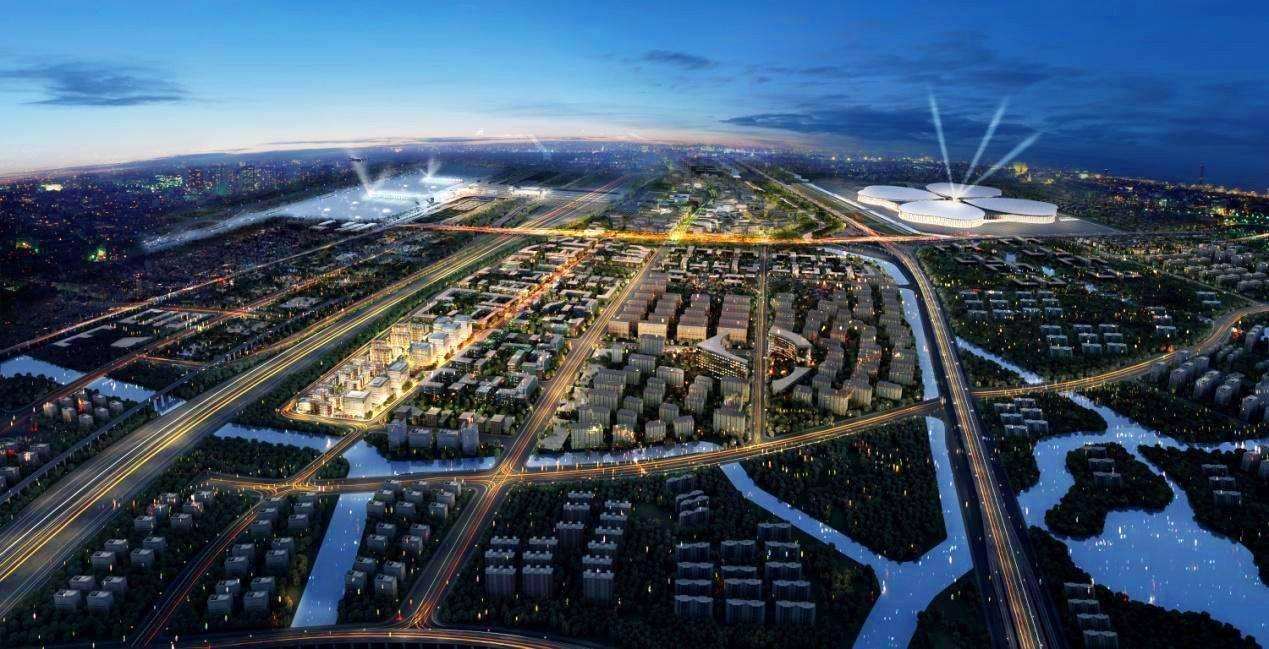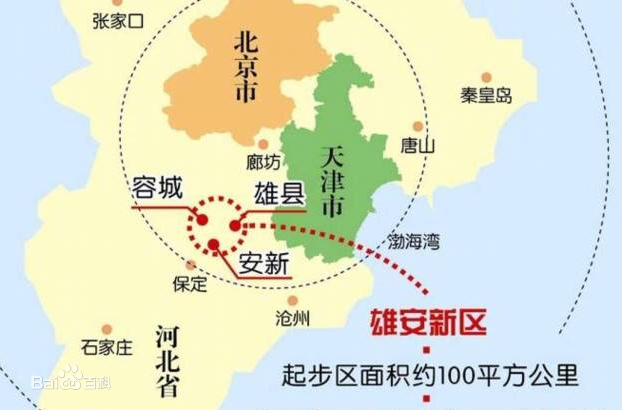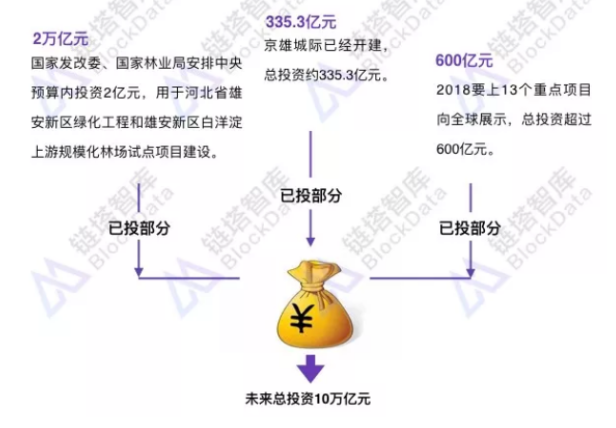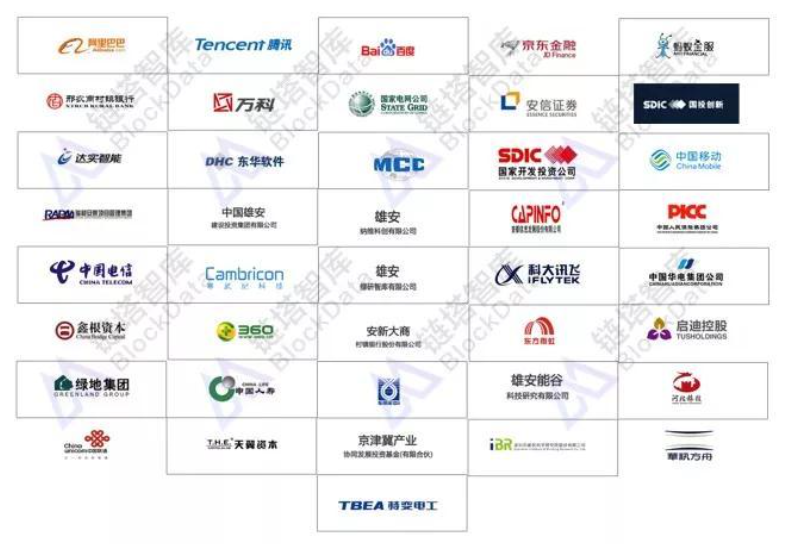Observation | How Xiong'an integrates “blockchain thinking” into urban genes
Source: Little Turtle said
Original title "Xiong, the city of China blockchain"

Around November 13th, Chen Gang, deputy governor of Hebei Province, said that “the blockchain is a new soil for the growth and development of Xiong’an New District City. It is necessary to integrate 'blockchain thinking' into the urban gene.”
- DAG: The next tipping point in the blockchain industry?
- Wuzhen Review: From Defi to MOV
- Anime coin scuffle: What have you been busy with in each of these two months?
From the birth of Xiong'an New Area, which is bound by emerging technologies such as big data, AI and blockchain, it has released a clear signal that it will be fully developed in the blockchain field.
I still remember that in January this year, Xinhua News Agency was authorized to issue the State Council's "Guiding Opinions on Supporting the Comprehensive Deepening Reform and Opening up of Hebei Xiong'an New District". The "Guiding Opinions" pointed out that "it is necessary to gradually grant the provincial-level economic and social management authority to Xiong'an New District. Like Shenzhen in the past, it took a new road in the 'deep water zone'."
The policy gave Xiongan such a high strategic position, and Xiong’an really did gradually implement the requirements. In the past two years, Xiong An has been committed to planning. More than 1,000 experts, more than 200 teams, and more than 2,500 technicians rushed to Beijing and Xiong'an to participate in the draft planning of the new district. After the revision of the 199 edition, the top-level design was basically completed.
In 2019 , Xiong'an New District entered a new stage of development and construction, and the blockchain can be said to be its clear main battlefield.
01. Xiong'an's strategic position
Xiong'an is located in Baoding City, Hebei Province, and is a new district established in Hebei in April 2017. Geographically located in the hinterland of Beijing, Tianjin, and Baoding, the development of Xiong'an is destined to be given important strategic significance.

Image source: Baidu Encyclopedia
Xiong'an was positioned as “the non-capital function of Beijing's non-capitalized centralized carrying place”, which is to take over the urban functions that are incompatible with Beijing's future development. As a “standby center”, Xiong’an, in addition to undertaking Beijing’s “eliminated urban functions” and the overloaded population, is also providing infrastructure and resources to key areas in the surrounding area.
In addition, according to the “Guidance Opinions” mentioned above, Xiong’an was identified as “the next development center”. After Shenzhen, Hong Kong, Shanghai, etc., Xiong'an is the next region that needs to be able to take on the responsibility of the economic development center at any time.
Xiong'an's own development momentum is mainly due to its active adoption of new technologies. Since its inception, Xiong An has written emerging technologies such as big data, AI , and blockchain into the development of genes.
In April 2018, Xiong'an New District released the "Planning Outline", pointing out that it is necessary to advance the development and testing of blockchain and other technologies.
In May 2018, Xu Qin, the governor of Hebei Province, said in an activity that “Xiong will use new technologies such as blockchain and artificial intelligence to plan and build the brain of Xiong’an Smart City.”
02. Blockchain thinking in the process of smart city construction
Under such policy encouragement, Xiong An is indeed deploying and applying blockchain technology.
First of all, building a blockchain in Xiong'an New District has a good capital and research environment. According to the calculation of the chain tower think tank, the total investment in the future of Xiong'an will reach 10 trillion yuan. At present, more than ten colleges including Tsinghua University, Peking University, and National People's Congress have participated in the construction of the new district. This provides strong funding and think tank support for technology development and application including blockchain.

Source of information: Chain Tower Think Tank
Secondly, Xiong'an's layout on the blockchain is improving day by day. From government affairs to environmental protection, from fund management to engineering control, the transparent, traceable and convenient urban form built on the blockchain is now in its infancy.
1. Public affairs
According to the statistics of the interchain pulse in July this year, since 2017, Xiong’an has launched and applied nine blockchain applications around the government sector, and three of them have used the blockchain incentive mechanism.
Xiong'an will adopt a personal point system based on blockchain technology, which is used to reward the public's excellent performance. Some positive performances of the public, such as sorting and recycling garbage, can help them earn points rewards. In the future, citizens can convert these points into daily necessities in a service system covering the entire Xiong'an area.
2. Fund management
The management of project funds and engineering processes is the main application scenario of Xiong'an in the blockchain.
Take the engineering fund management platform introduced by Xiong'an as an example. Since it was put into operation in August 2018, the platform has been connected to a number of projects, with more than 1,000 management companies and about 2 billion management funds.
The platform provides digital identity for the legal entity in the project, including developers, construction parties, and supervisors. Through the signature and broadcast of the project's money circulation process, the project flow to which link, to whom, the release time, etc. can be seen at a glance, and the information is credible and cannot be tampered with.
3. Environmental protection
Xiong’an’s layout of the blockchain has reached the point of “using blockchain technology for even planting trees”.
In April 2018, the Xinhuanet article stated that the “Millennium Xiulin” project of Xiong’an passed the big data system, and each tree had an “identity card”. The project also uses an algorithm such as big data, blockchain, and cloud computing to build an intelligent platform that traces and controls the entire life cycle of trees and builds a “digital forest” system.
These are just a few examples of Xiong'an's many blockchain applications. Xiong'an's layout of the blockchain is not only focused on itself. This development model is also highly open, and social and private capital, even foreign capital, can actively participate.
In July 2018, the blockchain company ConsenSys signed an agreement with the Xiong'an New District Government. The company advises Xiong'an New District on how to use blockchain technology to build smart cities and provide software solutions.
It is worth mentioning that the founder of ConsenSys, Joseph Lubin, is the co-founder of Ethereum, the second richest person in the field of cryptocurrency. ConsenSys was named Dubai's “Blockchain City Consultant”, and its “Smart Dubai” project enabled all government documents and transactions in the UAE to be transferred to the blockchain platform.
The cooperation with ConsenSys seems to be only one continuation in the Xiong'an blockchain process. According to the statistics of the chain tower think tank in May 2018, in addition to ConsenSys, 48 companies have been approved to enter the Xiong'an New District.

Source of information: Chain Tower Think Tank
As a representative of these 48 companies, BAT cut through their respective areas of strength and made relevant arrangements in Xiong'an.
At the beginning of 2018, Xiong'an was built and applied to the blockchain rental application platform. The listing information listed on the platform, the landlord's tenant identity information and the housing lease contract information can be verified by multiple parties, which solves the problem of fake housing. The core blockchain technology of the platform is provided by Ant Financial.
At the end of 2017, Tencent and Xiong'an New District signed the “Financial Technology Strategic Cooperation Agreement” and established the Tencent Xiong'an Financial Technology Laboratory. After the completion of the laboratory, Tencent's big data risk control system, based on Tencent Cloud's blockchain BaaS service, was first piloted in Xiong'an, and then extended to different scenes such as people's livelihood, enterprise, and government management.
03. The future
As mentioned in the Master Plan, by the middle of the 21st century, Xiong An needs to form a strong international influence. This means that Xiong'an will not only be a regional central city, but it will also be built into a highly international city. This is consistent with the openness of the blockchain.
In the future, Xiong'an's high-frequency flow in blockchain talent, capital, technology and other aspects is likely to expand to the international scope, and its internal development may also condense more international ideas.
Reference article:
"Heavy head! Xiong'an New District will be transformed into Xiong'an City, positioning the municipality directly above the jurisdiction of Shenzhen.
"China Blockchain 50 City – Xiong'an: Blockchain + E-government First Landed" by Chain Tower Think Tank
We will continue to update Blocking; if you have any questions or suggestions, please contact us!
Was this article helpful?
93 out of 132 found this helpful
Related articles
- From "after-the-fact forensics" to "synchronized deposit certificate", the change of procuratorial handling mode brought by blockchain technology
- Zhongan Technology Li Xuefeng: Based on insurance, using blockchain to innovate industrial applications
- Observation|Ternary Paradox: The Dilemma of Current Blockchain
- Viewpoint: Fuzzy of Business Boundary and Evolution of Blockchain Pattern
- Industry Weekly | Last week, 7 new financing projects in the blockchain, and 5 domestic support policies were introduced.
- Wuzhen·Huawei Zhang Xiaojun: Blockchain is to save costs, not to generate revenue
- Opinion | ENS: Why ENS does not create more top-level domains






